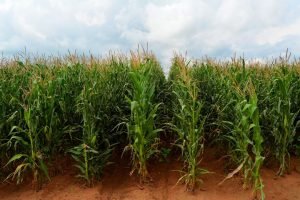Zoysia grass is a transitional grass that has light-green color. It is turf grass that tolerates extremely cold and heat. The grass thrives well in regions with high temperatures and humidity. The origin of the grass can be traced back to the 1800s, when it was imported from Asia. Zoysia works magic in beautifying your lawn. Just like any other type of grass, Zoysia grass has pros and cons associated with it.
Pros of Zoysia Grass
Here are the benefits and advantages of Zoysia grass:
1. Less watering: Zoysia Grass requires less watering than other types of grasses. Zoysia grass is a warm-season grass that thrives well in areas that experience low rainfall. Secondly, Zoysia grass has deep roots. The deep roots system allows the plant to draw underground water.
2. Pest and disease resistance. Zoysia grass is free from diseases. Thus no chemicals are needed to maintain the grass. Because of this, the environment and your family are not exposed to pest-related chemicals. In addition, the Zoysia roots are deep and thick, preventing weeds’ growth. Secondly, Zoysia grass is not so thick, so it is not a hiding place for pests.
3. Drought resistance. Zoysia grass is a warm-season grass, and because of this, it can withstand dry summer and prolonged drought. The Zoysia grass only requires less watering to remain green during the dry summer. In addition, its deep roots play a vital role during dry summers. They draw water from the ground, and thus the plant remains green throughout.
4. Tolerant of traffic. Traffic in this context refers to the number of people or activities the grass can accommodate. A high number of people and field activities like running can significantly stress the lawn. However, Zoysia grass has turf leaves and roots, thus overcoming all these defects. Secondly, after experiencing such stresses, the grass requires less watering and a few days to re-grow.
5. Tolerates cold seasons. Zoysia grass is a warm-season type of grass. That means it can overcome too cold seasons and too hot seasons. Unlike other kinds of grasses, The Zoysia grass is less affected by winter weather and extreme cold seasons. Therefore, the grass can do well in areas that experience winter seasons and too much rainfall.
6. Less maintenance and mowing. The Zoysia grass has slow upward growth. This saves the cost of mowing the grass every time. In addition, the Zoysia roots are deep and thick, preventing weeds’ growth. Therefore, no herbicides and pesticides are needed to maintain the grass.
7. Prevents soil erosion. One remedy for solving the soil erosion problem is planting Zoysia grass. The Zoysia grass has deep roots that hold the soil firmly together, preventing soil erosion in heavy rainfall or strong winds.
8. Beautiful. With its dark-green color, zoysia grass makes one of the best grass for your lawn. The Zoysia grass does well throughout the seasons; therefore, it is an ideal option to provide a beautiful lawn. Its thick-mat properties allow it to withstand too much traffic.
9. Evergreen. The Zoysia grass can maintain its green color throughout all seasons. This type of grass can easily survive cold and hot seasons. This property allows it to remain green in both seasons.
10. Durability. Unlike other types of grass, which dry up after a few months or years, Zoysia grass can survive many seasons and years.
Cons of Zoysia Grass
Here are the disadvantages of Zoysia Grass:
1. Slow growth rate: The Zoysia grass takes a lot of time to grow. Zoysia grass is not an ideal option if you need to complete your lawn within a short period. In addition, the grass takes a lot of time to recover from traffic damage.
2. Zoysia patch disease. The Zoysia grass is greatly affected by the Zoysia patch disease. This type of disease affects the color and the growth of the grass. The condition changes the color of the grass from green to rust-like color. If the disease is intense, it can kill the grass.
3. The color is not vibrant. The color of the Zoysia grass is light green and not deep. People have different preferences when it comes to grass colors. Some people are after the dark-green color, whereas others are after the mild-green color. This type of grass tends to use too much fertilizer and other supplements, but at last, its color remains light green.
4. Slow spreading rate. Zoysia grass not only has stunted growth, but also its spreading rate is stunted. Zoysia grass takes too many supplements and times to spread and form a tough thatch. The process of thatching is also affected by climatic and environmental conditions. Therefore, the spreading rate happens quickly when the conditions are favorable.
5. Maintenance problems. A mature Zoysia grass lawn poses many challenges while maintaining. When the grass completely spreads, it forms a tough and resilient thatch. The tough thatch prevents water and fertilizer supplements from penetrating the ground. The fertilizer and other supplements settle on the grass leaves, which may cause Zoysia patch disease in the grass.
6. Removing process. Zoysia grass poses a significant challenge during the removal process. After some time, you may need to uproot the grass and replace it with another. This is not easy with Zoysia grass. Once the grass is thoroughly established, its deep roots hold the soil tightly; thus, uprooting it is not easy.
7. it is Invasive. Zoysia grass takes time to spread but, at some point, quickly spreads to fill the neighboring areas. It will move from the lawn and attack the areas of your yard. Therefore, the gardener needs to monitor the grass every time.
8. Dulls mower’s blades. The Zoysia grass has tough and robust leaves. Therefore, frequent mowing of Zoysia grass can dull your mower blades, and thus you may be required to maintain the mower every time before using it. Secondly, the grass retains moisture for long periods. The humidity can cause the mower to rust quickly.



